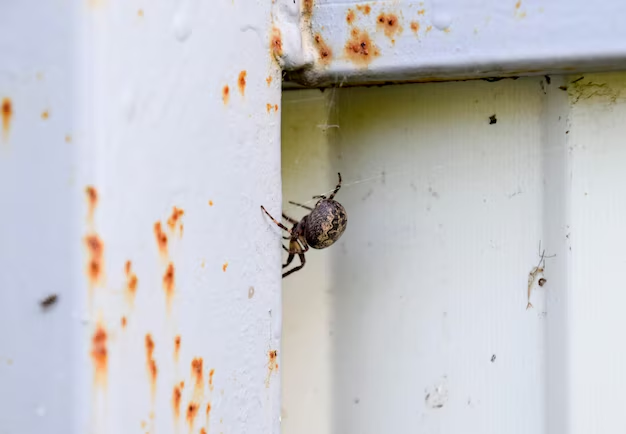Gnats in Your Fridge? Here’s How They Get There and What You Can Do
Opening your refrigerator should be a refreshing experience, but discovering gnats fluttering around inside can be both surprising and frustrating. These tiny nuisances, often seen as a problem for outdoor environments or sometimes indoor plants, can somehow make their way into one of the most controlled environments in your home: the refrigerator. Let’s dive into how this happens and how you can prevent it.
What Are Gnats and Why Are They an Issue?
Gnats are tiny flying insects that can be found worldwide. They belong to various families, including fruit flies and fungus gnats, and are typically seen in areas with moisture and decaying organic material. While gnats don’t directly harm humans, they can be a nuisance and are often associated with unsanitary conditions, causing distress in homes and especially in kitchens.
Why Do Gnats Love Your Refrigerator?
Refrigerators, though sealed, occasionally provide an inviting environment for these critters due to certain conditions:
- Moisture Attracts Gnats: Refrigerators have areas of condensation, particularly around the seals and moisture trays.
- Rotting Food: Leftovers or forgotten fruits and vegetables that have started to decay are a major attraction.
- Temperature Variability: Although the refrigerator is cold, the frequent opening and closing can momentarily increase temperature and humidity, inviting for gnats.
- Sealing Issues: Poor door seals might allow exterior air (and gnats) to enter.
How Do They Get Into the Refrigerator?
Understanding the pathway gnats may take to get into your refrigerator is key to preventing their future entry. Here are some common methods of entry:
Food Sources
Gnats often come into the house with produce; fruits and vegetables from the store may carry eggs or larvae that hatch once inside your home. When these foods make their way into the refrigerator without a proper wash or storage, gnats have an entry point straight into your cool food haven.
Poor Sealing and Gaps
As refrigerators age, the sealing around the door can become less effective. Cracks or gaps can develop, wide enough for a tiny gnat to squeeze through. If your refrigerator doesn’t quite shut properly, it’s not only costing you in energy but also potentially letting gnats inside.
Condensation and Leakage
The moisture produced by internal condensation or a slight leak creates an ideal habitat for gnats, allowing them to thrive and potentially reproduce even in cooler environments.
Detecting Gnat Infestation
If you suspect gnats in your refrigerator, here’s what to look for:
- Visible Gnats: The most obvious sign is seeing them fly around when the door is opened.
- Black “Specs”: These could be deceased gnats or eggs around seals or food areas.
- Moisture and Rot: Any signs of older food breaking down or visible moisture that doesn't seem to dissipate.
Steps to Eliminate Gnats
Implementing a mix of cleanliness strategies and preventive measures can ensure your refrigerator remains gnat-free and your food safe.
Clean Up Regularly
A crucial step to remove existing gnats and prevent new ones is thorough cleaning:
- Remove All Items: Empty your fridge, discarding any overripe, decayed, or suspect items.
- Deep Clean: Use a mixture of water and vinegar for a natural disinfectant approach, wiping all shelves, doors, and seals.
- Examine Seals and Trays: Scrub and wipe down areas where moisture collects, like beneath the seals and inside moisture trays.
Ensure Proper Sealing
Check your refrigerator door’s sealing effectiveness:
- Seal Check Test: Use a piece of paper and close the door on it. If the paper slides out easily, you may need to replace or repair the seal.
- Regular Maintenance: Ensure all seals are kept clean and intact to maintain effectiveness.
Use Airtight Storage
Storing perishables, especially fruits, and veggies, in airtight containers, reduces gnat attraction and helps in preserving freshness:
- Silicone Bags or Glass Containers: They are effective in sealing in odor and keeping any potential gnat habitat away from appliance space.
Control Moisture
Reducing moisture buildup within the fridge deters gnats:
- Check Drip Pans and Filters: Regularly inspect and clean these areas to prevent water accumulation.
- Temperature Management: Keep your fridge and freezer temperatures at optimal levels to reduce condensation. Generally, the refrigerator should be set around 37-40°F.
Natural Deterrents
You may want to try introducing natural deterrents into your kitchen space, outside of the fridge:
- Essential Oils: Options like peppermint or tea tree oil can deter insects.
- Vinegar Traps: Setting out jars with vinegar and a cover with holes can trap adult gnats, reducing numbers.
Prevention Tips to Keep Gnats at Bay
Here’s a handy guide to ensure your refrigerator remains gnat-free:
🧼 Regular Cleaning: Consistent deep cleaning every one to two months promptly removes any hiding spots or larvae.
🍌 Store Wisely: Keep produce in breathable containers outside the fridge before consumption; store airtight inside.
📆 Check Expiry Dates: Rotate and examine leftovers to minimize forgotten food decaying.
🔩 Check and Repair: Regularly inspect and maintain door seals, filters, and trays.
🍯 Use Natural Deterrents: Employ vinegar traps or essential oils within the kitchen environment.
Bringing It All Together
Finding gnats in your refrigerator can be unsettling, but understanding how these persistent pests slip inside provides actionable pathways for removing and preventing them. Clean up practices combined with astute storage methodologies and a maintained refrigerator environment can all work together to create a gnat-free, healthy eating space. By keeping your kitchen tidy and appliances running efficiently, you enjoy your meals without any unexpected insect visitors.
